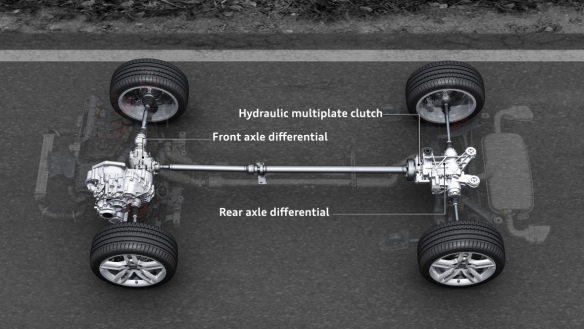Hydraulic multi-plate clutch
The Torsen differential is an excellent solution for a longitudinal engine and a drivetrain that runs in a straight line to the back. Audi chose an entirely different technology for the transverse-mounted engines in the compact models – an electronically controlled and hydraulically actuated multi-plate clutch. It first appeared in 1998 in the TT quattro and the A3 quattro.
The clutch is located at the end of the prop shaft, in front of the rear axle differential – an installation position that also benefits the axle load distribution of the vehicle. It normally first sends the majority of the engine’s power to the front axle. The controller uses a variety of data to analyze the driving conditions and redistributes the power as required.
Inside the clutch is a package of plates that rotate in an oil bath. The metal friction rings are arranged behind one another in pairs – one ring of each pair is rigidly meshed with the housing which rotates with the prop shaft, the other ring with the output shaft to the rear axle differential. The package of plates can be forced together by controlled hydraulic pressure. As the pressure increases, more torque flows steplessly to the rear axle – up to 100 percent in some cases.
Two electric pumps are used to quickly build up the oil pressure, which can reach over 100 bar (1,450 psi). In the current models, an accumulator that maintains the oil pressure at all times provides for the even faster redistribution of torque, which takes place within just a few thousandths of a second.
Status: 2011
